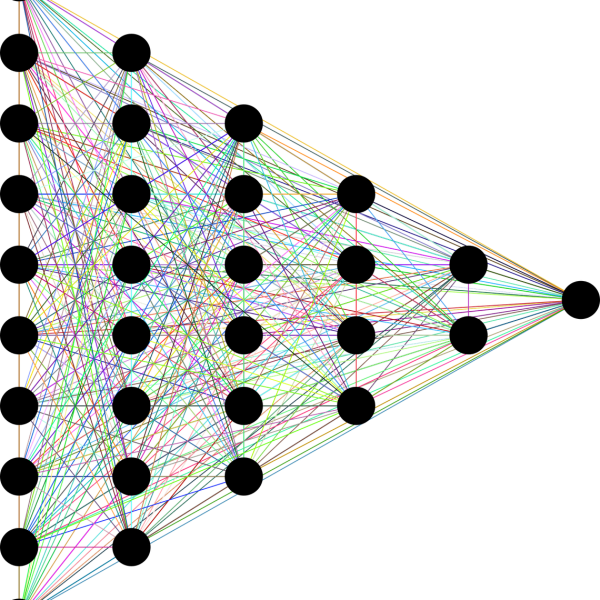As NASA prepares for upcoming Artemis missions that will return astronauts to the lunar surface, they are leveraging cutting-edge technologies like artificial intelligence to design the next generation of spacesuits. With AI, NASA aims to create more sophisticated, customizable spacesuits to enhance astronaut safety and performance.
The specialized demands of the moon’s harsh environment present unique challenges for spacesuit engineering. AI offers solutions by streamlining design, simulating testing, and optimizing suits for comfort and mobility. NASA’s interdisciplinary teams are pioneering processes that could forever change how spacegear is developed.
Join us as we explore NASA’s moon-bound spacesuit project and the growing role of AI in space innovation. The intersection of space exploration and AI highlights how humans and intelligent algorithms can complement each other to push boundaries. Their synergistic partnership may hold the key to overcoming obstacles on the path to the moon and beyond.
Back to the Moon – The Artemis Program
After decades focused on low orbit operations, NASA plans a triumphant return to deep space exploration under the Artemis program. Artemis aims to land the first woman and next man on the lunar south pole by 2025. Additional crewed flights around and on the moon will follow.
NASA views these missions as the next leap in expanding human presence into the solar system. Developing a permanent base on the moon will enable further Mars expeditions and space mining projects while fostering scientific discovery.
But first, NASA must design equipment enabling astronauts to live and work safely on the moon. The extremely dusty, abrasive lunar surface and temperature swings from -250 to 250 degrees Fahrenheit require durable, reliable gear. Spacesuits represent perhaps the most crucial technology to get right.
Building on extensive Apollo era research, NASA’s current focus is creating spacesuits surpassing those used over 50 years ago. Advances in computing and AI offer the chance to engineer smarter, more capable suits.
The stakes are high, with suits protecting astronauts from the harshness of space. To fulfill the vision of returning to deep space, NASA is enlisting AI to design their next generation flagship spacesuit.
The AI Design Process – Optimizing for the Mission
NASA’s new moon-bound spacesuits leverage two key AI techniques – generative design algorithms and human motion simulations. Combining them facilitates a streamlined design-to-prototype process.
It starts with engineers programming parameters like weight, mobility, and temperature control into generative algorithms. The AI then iterates through countless combinations selecting the most optimal subsystems and parts. It also automatically adjusts suits for different body types and scenarios.
Generative algorithms excel at spanning wide solution spaces human designers can’t manually explore. NASA researchers review the highest performing options validated by simulations before prototyping.
Those prototypes then undergo testing in physics-based environments simulating moonwalks and tasks. AI analyzes sensor data to refine parts and materials that maximize astronaut performance. This feedback loop iterates until designs meet mission requirements.
AI-testing in photorealistic VR adds another layer of human factors validation without costly real-world trials. Immersive simulations allow astronauts to experience suits in virtual lunar contexts. Their impressions further refine the human-AI design cycle.
According to NASA’s Amy Ross, by front-loading design with AI before prototyping, “it shortens the timeline between idea and workable technology significantly.” AI grants them flexibility to tailor spacesuits to astronauts and evolving mission needs.
The Coming Upgrade – AI-Enhanced Spacesuits
Integrating AI into their design process allows NASA to engineer spacesuits far beyond what Apollo astronauts used. The sophisticated results address crucial safety and performance demands under intense environmental duress.
One key upgrade is a more ergonomic lower torso allowing full hip, knee and ankle flexion. This dramatically expands how astronauts can move and complete tasks during lunar expeditions. More flexible suits also help prevent joint pain and muscle fatigue.
NASA is also utilizing advanced smart sensors and materials. Machine learning can parse biometric data in real-time to regulate temperature, humidity and ventilation for optimal comfort inside the suit.
New lunar terrain-gripping boots will help astronauts traverse the challenging surface. Spacesuits may even feature on-demand radiation shielding to protect from solar storms.
Augmented reality displays inside helmet visors present interactive information triggered by vision and voice commands. This gives astronauts situational awareness and guidance while letting them stay hands-free.
Overall, AI allows customization for comfort, capability and safety based on each astronaut’s needs. The benefits will compound on longer missions as fatigue sets in. AI-designed spacesuits aim to act as a seamless extension of the astronaut’s abilities.
To infinity and Beyond – The Future of AI and Human Spaceflight
NASA’s spacesuit project provides just one glimpse of AI’s vast potential to transform space exploration. As missions progress, intelligent algorithms will streamline more design processes and handle mission-critical functions.
Deep space travel inherently demands greater system autonomy. The communication lags to mission control mean astronauts must have onboard intelligence assisting them. Through human-AI teaming, the strengths of each complement the other.
AI astronaut assistants could manage spacecraft functions, perform scientific investigations, and enhance decision-making during time sensitive emergencies. Virtual companions could also provide social-emotional support on long voyages.
Back on Earth, AI will automate ground systems, seismic monitoring, astronomy analysis and launch operations. It also unlocks possibilities for in-space manufacturing of tools and habitats using local materials.
Ultimately, human spaceflight blends cutting-edge technology with profound imagination. As an explorer at heart, NASA understands AI’s disruptive power is only eclipsed by human ingenuity and resolve.
The quest to push boundaries requires marrying both – the exponential speed of AI with the creativity and spirit unique to humankind. NASA’s spacesuit project offers lessons in phasing out dated assumptions of human-AI dynamics to form a more collaborative future.
Together, humans and intelligent algorithms can daringly go where neither could go alone. If NASA’s interplanetary aspirations are any indication, space represents just the start of an expansive frontier ready to be explored by this formidable team.




